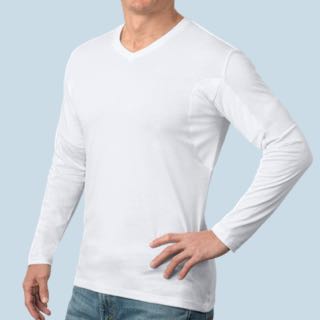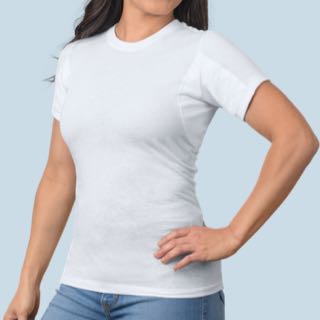How to Stop Sweating in Humid Weather
In the sweltering embrace of a humid day, when the air feels as thick as soup and your skin glistens with a perpetual sheen of sweat, seeking relief becomes more than a desire—it becomes a necessity.
If you're tired of feeling uncomfortable and constantly searching for ways to keep cool, you're not alone. We've gathered some effective tips to help you beat the heat and stay dry, no matter how humid it gets.
Why Do We Sweat So Much in Humidity?
Sweating is your body’s way of cooling down and regulating your temperature. When your internal temperature changes, your brain triggers a response that activates your sweat glands. Sweat is released and evaporates on your skin. It cools down your skin and prevents you from overheating.
So how does humidity come into play? Humidity is the percentage of water vapor in the atmosphere at any given time. In conditions with zero humidity, the air doesn’t hold any water vapor (so the weather feels dry). On the other hand, in conditions with 100 percent humidity, the atmosphere is so saturated with water vapor that it can’t absorb any more moisture (typically more tropical climates).
Humidity affects sweat’s ability to evaporate. Typically, you’d rely on fresh air or a breeze to cool you down when you sweat. But when it’s humid, the atmosphere has already absorbed a fair share of water vapor, so the sweat on your skin isn’t able to evaporate as quickly.
When it's humid, sweat lingers on your skin instead of evaporating, making you feel hotter and more uncomfortable. For those who sweat excessively, humidity and hyperhidrosis are an unruly combination.
Read more: 6 Factors That Influence How Much You Sweat
How to Control Sweat in Humid Weather
Sweating in humid conditions may seem grueling, especially if you have hyperhidrosis. But you don’t have to suffer in discomfort and be a sweaty mess. Follow these tips to stay cool and dry, even when humidity levels are sky-high.
1. WEAR THE RIGHT CLOTHES
Lightweight and Loose-fitting: Clothes that are lightweight and loose allow for better air circulation, helping to cool the body by increasing sweat evaporation and heat dissipation. Tight clothing can restrict this airflow, making it difficult for the body to regulate temperature.
Breathable Fabrics: Materials that allow air to circulate freely are crucial. Natural fibers such as cotton, linen, and hemp are highly breathable and absorb sweat from your body, allowing it to evaporate, which cools you down. However, in extremely humid conditions, these fabrics might not dry as quickly as desired.
Moisture-Wicking Materials: In very humid conditions, where natural fibers might stay damp, moisture-wicking synthetic fabrics can be beneficial. These materials, often used in athletic wear, are designed to draw sweat away from the skin to the exterior of the fabric, where it can evaporate more easily.
Sweat Proof Undershirt: Tackle humidity head-on with the innovative design of Thompson Tee — the OG sweat proof undershirt, engineered to keep you dry, regardless of the weather. The Hydro-Shield® technology provides a powerful underarm barrier against sweat marks, making it an ideal choice for those steamy, humid days when staying fresh is a challenge. We recommend the 100% cotton Original Fit which is looser and allows for more air circulation.
“I’m a heavy sweater in high humidity. Like Albert Brooks in “Broadcast News”. Had an outdoor black-tie wedding in Central Texas in triple-digit heat. I knew I’d be soaking wet all night long if I didn’t do something, so I tried this with a lot of skepticism. I cannot say enough about how miraculously it worked. Liked it so much that I bought two v V-necks the next day for an upcoming business trip where I’d be presenting with no sports coat. Again, I was dry!” - D.J. (Amazon Review)
2. STAY HYDRATED
This one may seem like a no-brainer, but it’s crucial. When it’s humid, your body can’t cool down as quickly, so drinking more water is a must. Drinking plenty of fluids helps regulate body temperature. When you're well-hydrated, your body can sweat more efficiently, which helps with cooling down.
Pro tip: Some foods and beverages, like caffeine and spicy foods, can trigger sweating. Reducing intake of these can help manage sweating when humid.
Read more: 10+ Foods That Reduce Excessive Sweating
3. LIMIT STRENUOUS OUTDOOR ACTIVITIES
Heat and humidity are natural triggers for sweating. Whenever possible, stay in air-conditioned environments during the hottest parts of the day and avoid strenuous activity in high humidity. Intense physical activity in humidity could lead to heat exhaustion or heat stroke, which can be life-threatening.
Fortunately, weather and humidity levels are quite predictable, so plan your outdoor activities around the hottest times or days. Scope out your local weather report and keep an eye on the temperature and humidity levels.
4. USE ANTIPERSPIRANT
Unlike deodorants, which only mask odor, antiperspirants contain aluminum-based compounds that temporarily block sweat pores, reducing the amount of sweat that reaches your skin.
Pro tip: For best results and maximum effectiveness, apply antiperspirant the night before to give your skin more time to soak up the ingredients.
5. USE TALCUM POWDER
Sprinkling some talcum powder or baby powder on your skin can absorb moisture and help you stay dry and cool. Keep in mind, though, that these powders don’t reduce or stop sweat. However, they can offer some additional comfort and protection on extra humid days. (And, it’s a quick and cheap hack if you find yourself in a pinch.)
6. USE A DEHUMIDIFIER
If you're struggling to combat humidity indoors, consider investing in a dehumidifier. A dehumidifier works by removing water and moisture from the air for a drier, cooler environment.
For a better night's rest, you can run a dehumidifier while you're sleeping.
Read more: How to Stop Sweating So Much [14 Proven Solutions]


